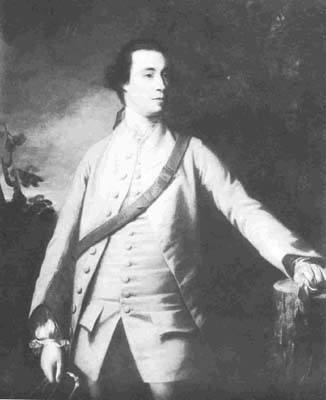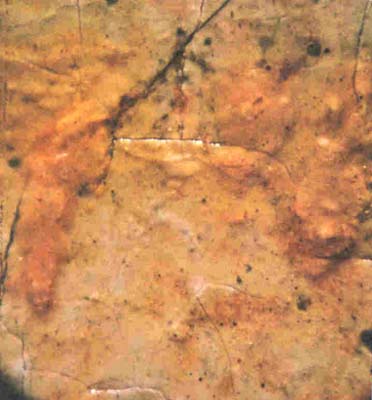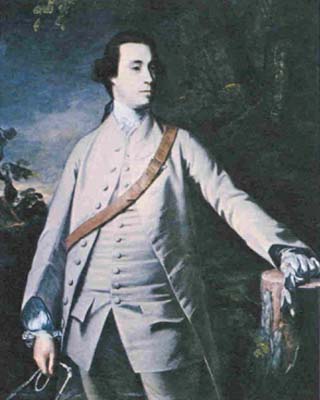
Bulletin 17, 1971
Home
Français
Introduction
History
Annual Index
Author &
Subject
Credits
Contact




A
Reynolds Revived
by Mervyn Ruggles
Résumé en français
Pages 1 | 2
| 3
The first major
European painting acquired by the National Gallery of Canada was
Reynolds' Portrait of Charles Churchill (Acc. no. 29, purchased
in 1910), (1) which was painted in London in 1755 when the artist was
thirty-five. (2) According to an entry in Reynolds' sitter-book of that
year, the portrait was commenced at no on on Tuesday, 15 April, at
his studio in Great Newport Street. (3) The date of its completion is
not recorded, but Waterhouse estimates that Reynolds required,
on the average, nine sittings for a portrait 30 by 25 inches.
Obviously the three-quarter-length Churchill took somewhat
longer. During that year Reynolds had 120 sitters, and by 1758 had
acquired 150 clients, whom he accommodated by painting every day,
including Sunday. That was his peak year.
Reynolds' success as a fashionable portrait-painter had been assured
by the instant acclaim received by his dramatic full-length portrait
(94 by 58 inches) of Augustus Keppel, later Viscount Keppel, First
Lord of the Admiralty, completed the preceding year, 1754. (4) It is
interesting to note that during this early period Reynolds set his
fees at the same level as those of Thomas Hudson, his former
master: a head cost 12 guineas, a half-length 24, a full-length
48. (5)
Twenty-seven years later, Reynolds was charging 50 guineas for a
head, 100 for a half-length (55 by 44 inches), and 200 for a full
length. In comparison, Gainsborough's fees at this time (1781)
were a head for 30 guineas, a half-length 60, and a full-length 100,
while Romney was charging 20, 40 and 80 guineas respectively. We can
assume, therefore, that in 1755 Charles Churchill paid about 40
guineas for his almost full-length painting of 50 by 40 inches.
The exact fee for a three-quarter length is not recorded in
available literature.
Having returned in October 1752 from his three-year stay in Italy,
Reynolds was settled in London by 1753. (6) We are reasonably sure that
up to this period he had been a "direct" painter, using
the straightforward technique (pigment in linseed oil) of his
teacher, Hudson. On his return from Italy he embarked on the "experimental work" (7) with paint in various types of
mixtures with other oils that was to continue throughout his
career. Unfortunately, areas of the paint structure in the
National Gallery's Churchill demonstrate evidence of some of
his experimental treatment. At that time Reynolds was already
favouring blues, greys and blue-blacks. H. A. Buttery refers to
Reynolds' use of the fugitive colour carmine over a white-lead
primary brushwork in the flesh tones. (8) The carmines commonly used in
those days were not permanent (9) and Reynolds' use of them for flesh
tones often produced results that were far from satisfactory. (10)
Only much later did Reynolds make use of the more stable vermilion
red for flesh colour. He employed bitumen, a brown mixture based on
tar, as an additive for his backgrounds and shadow areas, often
mixing waxes with pigments, together with quick driers. Numerous
examples of Reynolds' experimental efforts exist. Doubtless, the
famous Sarah Siddons as "The Tragic Muse", (11) commenced
in 1783 and completed a year later, after much working over, now
shows evidence of his use of bitumen and other additives in his
linseed oil medium. Of this work, now in the Huntington Collection,
San Marino, California, Robert R. Wark states:
It was always a somber picture, but if the colors may not have
altered radically, there is at least one feature of Reynolds'
technical procedure in the painting that has had a serious effect on
its appearance. Reynolds was constantly experimenting with pigments
and media. He discovered that a beautiful warm, dark, velvety tone
could be produced by the use of bitumen. Bitumen or asphaltum is
a tar like substance. When used as under-painting in a picture (as Reynolds has used it in the dark background areas of "The
Tragic Muse", it never really hardens but continues to flow
slightly, opening up broad, deep cracks ill the layers of
paint.
This collection is very marked in the background areas of "The Tragic Muse" but
fortunately is practically absent
from the figure itself. (12)
I inspected the Siddons portrait in June 1969 at San Marino and
found Wark's comments to be entirely valid.
Another example of the serious after-effects of his experiments can
be seen in The Infant Academy which was exhibited at the
Royal Academy in 1782 and is now in the Iveagh Collection at Kenwood, England. The traction cracks in the background drapery of the
James
Boswell portrait in the National Portrait Gallery, shown at the
Royal Academy exhibition of 1787, have the same origin. In contrast,
the Lady Caroline Price, also completed in 1787 and now in
the Bath House Collection, and the Lady Skip with and the Lady
Taylor, both at the Frick Collection, have from my observation
survived in excellent condition.
Next Page | The
Portrait of Charles Churchill
1 | 2
| 3
Annual Index | Author & Subject | Credits | Contact
This digital collection
was produced under contract to Canada's Digital Collections program,
Industry Canada.
"Digital
Collections Program, Copyright
© National Gallery of
Canada 2001"